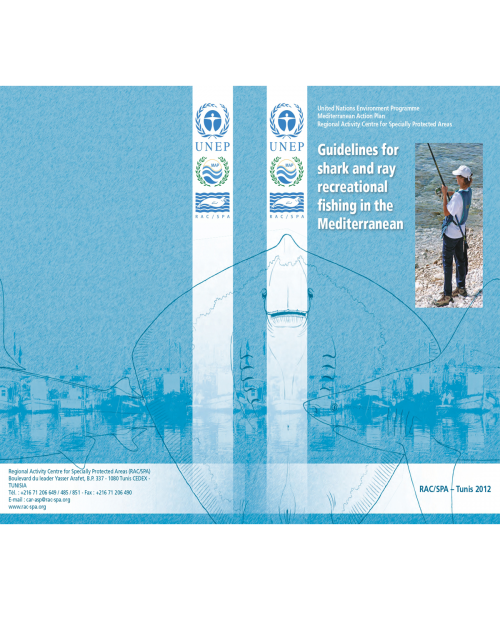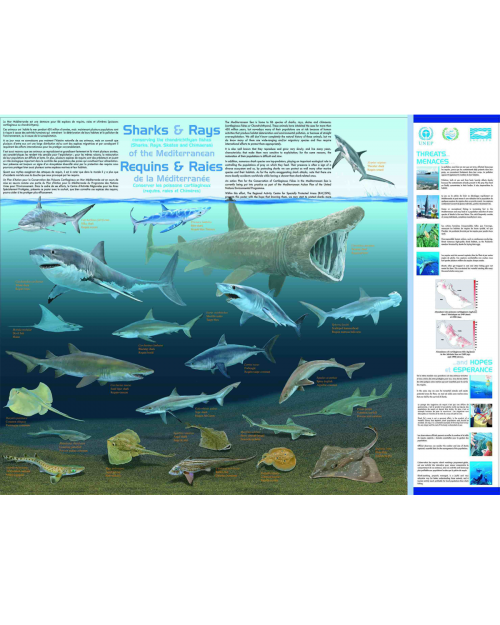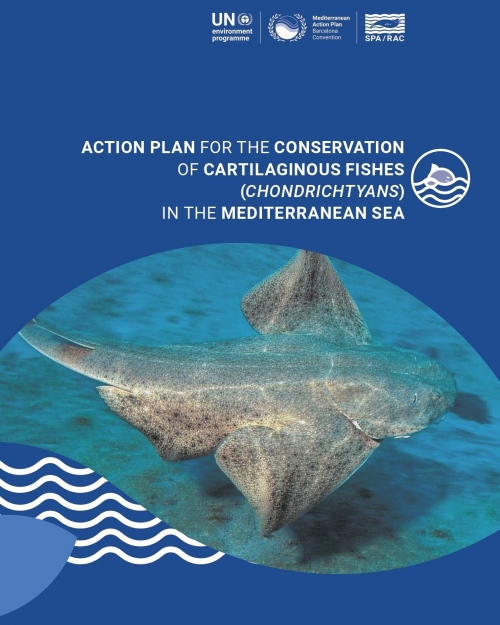Background
The group of cartilaginous fish, such as sharks, rays and chimera (classified under chondrichthyan fish) of the Mediterranean is relatively diverse. Most of its species have commercial importance and have been exploited as target species or bycatch; others are very rare and may never have been common. Today, it is widely acknowledged that unmanaged and unsustainable fishing, pollution, and the impacts of some littoral development constitute serious threats to the populations of these species, their diversity and abundance.
The Action Plan for the Conservation of Cartilaginous Fishes (Chondrichthyans) in the Mediterranean was approved at the COP13 of the Barcelona Convention in 2003. It was developed in line with the UN FAO’s International Plan of Action for the Conservation and Management of Sharks (IPOA–Sharks), the UN Agreement on Straddling Fish Stocks and Highly Migratory Fish Stocks, and the World Summit for Sustainable Development.
Objectives
The Action Plan on Cartilaginous Fishes is aimed at promoting:
- The general conservation of the chondrichthyan populations of the Mediterranean, by supporting and promoting national and regional programmes for sustainable fisheries of commercial stocks either as they are target and accessory species;
- The protection of selected chondrichthyan species, whose populations are considered endangered;
- The protection and the restoration of critical habitats, such as mating, spawning and nursery grounds;
- The improvement of scientific knowledge by research and scientific monitoring, including the creating of regional standardized databases;
- The recovery of depleted chondrichthyan stocks;
- Public awareness and capacity-building about conservation of chondrichthyans.
Recommendations
The Action Plan recommends the following general priorities:
- Provide legal protection status for the endangered species identified at regional and national level;
- Assess the status of species with missing data;
- Develop management programmes for sustainable fisheries catching for commercial species;
- Encourage the fishing practices that reduce chondrichthyan bycatch and/or facilitate live release and ban wasteful practices such as finning;
- Identify critical habitats for their protection and restoration;
- Develop research programmes on general biology, ecology and population dynamics with particular regard to reproduction and growth parameters;
- Develop both systems for the monitoring of fisheries and fishery-independent monitoring programmes;
- Develop training to ensure capacity-building at national and regional level, mainly in taxonomy, biology, ecology, monitoring methods and stock assessment; and
- Develop information and education programmes for professional and public awareness.
Updates
The original five-year Implementation Timetable annexed to the 2003 Shark Action Plan was reviewed at a meeting of independent chondrichthyan fish experts in May 2009. This expert meeting reviewed progress and elaborated an updated calendar of actions for the next four-year period. Their recommendations, including a draft Shark Action Plan implementation timetable for 2010–2013 were presented to and approved by the Ninth Meeting of Focal Points for SPAs in 2009.
A new Implementation Timetable for 2014–2019, taking into account the results of the national and regional evaluations was presented and adopted by the Eleventh Meeting of Focal Points for SPA (Rabat, Morocco, 2 - 5 July 2013) (click here for further information).



